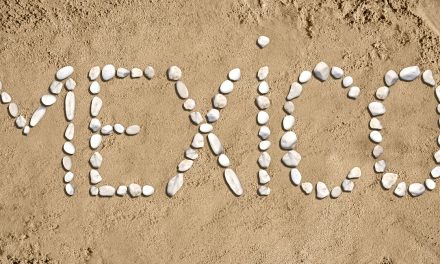Donors want to make an impact consistent with the kind of vision and thriftiness that allowed them to accumulate wealth.
In the previous installments Part 1 CCRC Residents as Donors , Part 2- The Givers, Will You Use My Money Wisely?, we considered the donor mentality and the distractions that can undermine fundraising efforts. In asking for philanthropic support charitable organizations not only have to demonstrate that the cause is one worthy of support, but they are also called to demonstrate a strong commitment to value and effectiveness. It’s evident there is widespread competition for every charitable dollar donated and that donors want to make an impact consistent with the kind of vision and thriftiness that allowed them to accumulate wealth.
Charities need to consider their impact proposition. The cause must be seen as worthy and the response as effective. Donors must also know that their gifts won’t be squandered. That donor fear can be triggered if a high proportion of the gift goes to pay gift solicitation costs. On the other hand some charitable activity that involves high costs can have a highly beneficial result, e.g. fundraising dinners and similar events. Fundraising costs are similar to marketing costs in the business arena; some products and services incur low marketing costs while others require a stronger sales incentive. Higher than expected fundraising expenses must be openly acknowledged and justified lest donors look elsewhere.
Figuring Donors Out
Not only is there vast competition to attract donors, but donors themselves can be quixotic so successful fundraisers have to be able to discern the dreams and motivations of many individuals. One donor, for instance, at the LeadingAge California Conference, revealed a totally unpredictable pattern for giving. To begin with he cited support for an arts group for which he and his wife are the lead donors. The basis for that donation was the opportunity to make a difference. The donors were impressed by the quality of the artistic and executive leadership and positioned their donation to allow the arts group to prosper and grow. In essence it was an investment in the credibility of the artistic leadership team.
That might suggest a well-reasoned approach to giving but the same donor confessed that he and his wife support at the highest giving level a local university, with which they have no particular association other than as donors, simply because the university published a hierarchy of donor classifications and they wanted to be part of the elite group. That giving to a local university contrasted with what the donor revealed about his giving to the university from which he graduated. The donor’s undergraduate university is noted for the success of its fundraising efforts, which originated late in the 19th century in a wish by alumni volunteers to support the university, but which has evolved to be led by professional fundraisers. In recent years, the university has followed a fundraising practice of suggesting a concrete donation amount to donors as an aspirational gift.
A typical letter, signed by a classmate, reads, “We notice that you’ve given $2,000 in the past, but we would like to encourage you now to consider a gift to this year’s annual giving fund of $5,000.” In describing this fundraising approach to the LeadingAge California session, the donor expressed offense and outrage at this kind of entitlement fundraising. He commented that he carefully gives only the recommended amount, even though he might otherwise have given many times that amount. Since information about donation amounts are shared with people he knew at university, he meets the entitlement expectation so his friends won’t view him as cheap. At this point in the LeadingAge Conference the donor’s wife chimed in to mention that they matched the husband’s university donation with a similar donation to her university. She is now one of the lead donors for her university.
The Big Ask
One attendee asked the donor and his wife how they respond to letter appeals. They answered that they emphatically avoid supporting all charities that approach them in that way because of the inundation of unwelcome mail and telemarketing interruptions that ensue. They are very careful in their giving to try to avoid the harassing intrusions in the lives of donors that have become characteristic of modern fundraising. Other donors at the LeadingAge California Conference emphasized that they prefer charities that touch the donor or the donor’s family. Church affiliations are a strong draw. Donor college affiliations, and the colleges of offspring, are attractive. A charity that was there for the donor or the donor’s family when they were down on their luck may receive lifetime donations as an act of gratitude. Here a personal story may be illustrative.
At age 16 I was stuck in North Bay, Ont. without any money. I had worked that summer in a silver mine deep into the bush (which is what Canadians call the forest wilderness). I spent the day wandering from bank to bank and from store to store trying to cash a check so I could catch an overnight train to Toronto. Only the officer of the local Salvation Army unit, Major John Wood, would cash my $10 check. That was now more than 60 years ago and I still support the Salvation Army for having believed in me when I needed it. That experience also affected my feelings toward banks since the local bank branch of the national bank in which I banked would not honor its own check drawn on another branch.
The conclusion to be reached from this is that donors are individuals and that their reasons for donating, and the amount they donate, is not always subject to well-reasoned analysis. Giving is a very personal matter. One questioner from among the fundraisers in the audience asked if personal solicitation made a difference. For the donor who responded the answer was a decided “no.” An in person solicitation reveals a kind of off-putting desperation and suggests that the cause is forced to pay professional salespeople because the cause doesn’t sell itself. On the other hand an in person appeal by a principal of the charity who is open to ideas from the donor for improving charitable effectiveness can be very compelling.
It’s All About the Relationships
From this it’s evident that relationships matter. Donors want to feel that their donations make a difference. This is especially true of people who have the means to make lead donations. They want assurance that the charitable cause is efficiently managed so that their donations won’t be squandered. Too often the nonprofit mentality toward cash receipts seems to be easy come, easy go. That is not an appealing prospect for a potential donor. The big takeaways concerning philanthropy from the LeadingAge California meeting are (1) that it is voluntary for the donors and (2) that the field of appeals is crowded and highly competitive.
Only the most effective, most discerning charities are likely to find the success they seek. The hot buttons for reaching donors and motivating their generosity are the same motivators that drive most human endeavors: a valid cause; first class organizational performance; respect for supporters; openness to new ideas; warm individual relationships; and the know how to allow donors to make a difference and for them to feel appreciated for having done so. Giving is highly personal. Jack Cumming
If you like this article (or even if you don’t) it would be a great honor to have you subscribe to our mailing list HERE








